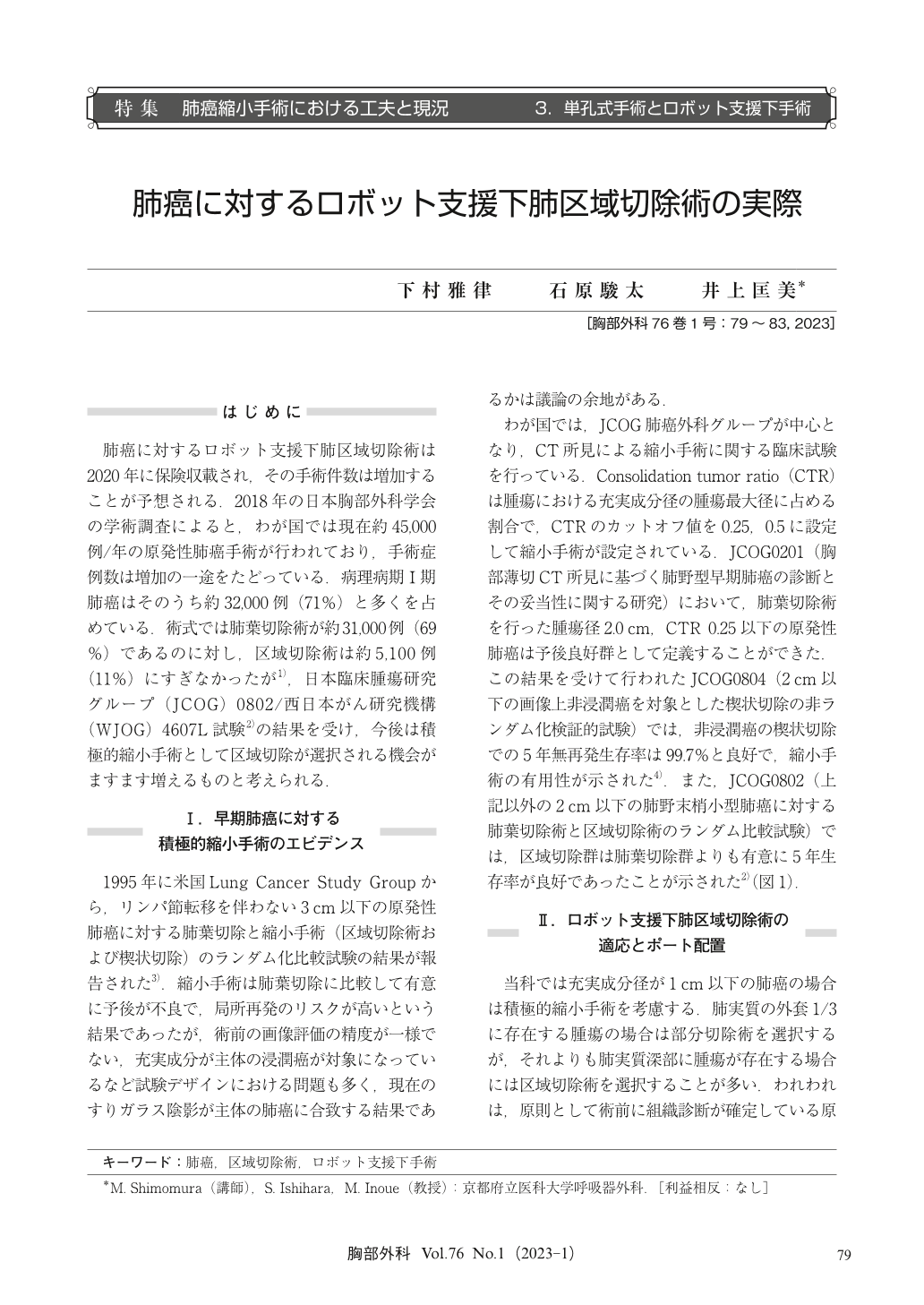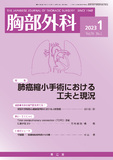Japanese
English
- 有料閲覧
- Abstract 文献概要
- 1ページ目 Look Inside
- 参考文献 Reference
肺癌に対するロボット支援下肺区域切除術は2020年に保険収載され,その手術件数は増加することが予想される.2018年の日本胸部外科学会の学術調査によると,わが国では現在約45,000例/年の原発性肺癌手術が行われており,手術症例数は増加の一途をたどっている.病理病期Ⅰ期肺癌はそのうち約32,000例(71%)と多くを占めている.術式では肺葉切除術が約31,000例(69%)であるのに対し,区域切除術は約5,100例(11%)にすぎなかったが1),日本臨床腫瘍研究グループ(JCOG)0802/西日本がん研究機構(WJOG)4607L試験2)の結果を受け,今後は積極的縮小手術として区域切除が選択される機会がますます増えるものと考えられる.
The role of segmentectomy for lung cancer is expected to increase owing to the results of Japan Clinical Oncology Group (JCOG) 0802. Moreover, the major advantage of robot-assisted thoracic surgery (RATS) is that it allows high precision of dissection. The surgical approach comprised the placement of four robotic ports on the lower intercostal space with an assistant hole. While performing robotic surgery without haptic sensation, it is considered safe to dissect the bronchus first followed by the interlobar and intersegmental plane dissection at the end. In our institution, 52 lung cancer segmentectomies were performed between April 2020 and April 2022, out of which 8 (15.4%)were robot-assisted. The median operating time and console time for RATS were 233 and 182 minutes, respectively, showing a trend towards significantly longer operating time as compared to thoracoscopic segmentectomy (184 vs. 233 minutes, p=0.007). There were no significant differences in the time to drain removal, the incidence of complications, or pain scores at discharge. Although robotic surgery provides the surgeon with better view and greater precision, it does not decrease the operation time and pain. However, robot-assisted surgery is expected to deliver greater benefits to the patient with technological advances in devices and surgical techniques.

© Nankodo Co., Ltd., 2023


